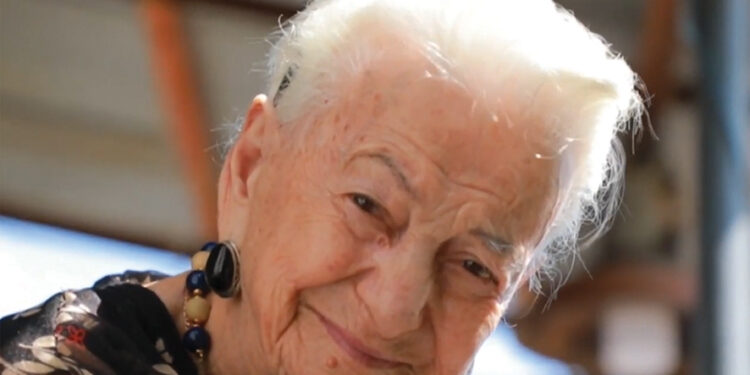Elene Abashidze is 103 years old—vigorous, sharp-minded, and remarkably active. She plays the piano and sings almost professionally. Just a few weeks ago, she stood on the stage of the Tbilisi Concert Hall like a seasoned performer, captivating the enthralled audience with her vocal talent. She is unbelievably amazing! And that’s not all that makes her so important and lovable.
Elene Abashidze is also a prominent scientist. She graduated from the Geography and Geology Department of Tbilisi State University with a major in Hydrology. In her first dissertation (Candidate of Sciences), she addressed the significant issue of Karst—a distinctive type of landscape formed by the dissolution of soluble bedrock, most commonly limestone, by water. This process creates unique landforms such as sinkholes, caves, and underground drainage systems. Her doctoral dissertation, completed in 1967, focused on the hydro-technical and hydrodynamic mechanisms of Karst formation in carbonate rocks.
These highly scientific terms might sound a bit esoteric, but the essence is this: our lady of genius has made a monumental contribution to world science. For her achievements, Elene Abashidze was recognized by the American Biographical Institute and awarded the title of Woman of the Year among female scientists worldwide. She was noticed and nominated for this prestigious award as one of the individuals believed to make a lasting global impact—people who matter not only because of their past accomplishments, but also for their enduring and valuable scientific ideas that will shape the future.
Her first publication, which appeared in the Bulletin of the Geographical Society in 1946, explored the use of Karst in the energy sector. Abashidze was the first scientist to challenge the long-standing Dissolution Theory, which had been widely accepted for over two centuries. She conducted in-depth studies on the role of water velocity in the solubility of rocks. Her powerful experiment, which lasted 250 days, provided the American Biographical Institute (which researches the lives and contributions of scientists globally) with the grounds to name her Woman of the Year and include her among the 100 Most Outstanding Scientists of the Planet.
Here’s why her experiment was so groundbreaking: due to the thrusting and drying of the Earth’s crust, many hairline cracks form in limestone deposits that accumulated on the seabed. Over time, these cracks expand due to rain and other environmental effects, creating karst forms and cavities. Abashidze artificially replicated these cracks and passed distilled water—mimicking rainwater—through them, studying how water velocity affects rock dissolution. She discovered that in a period of 50 years, a hairline crack can widen by 2.5 cm if the water pressure gradient is 1. This means that if the pressure is greater, more cavities will form, and the rate of dissolution will increase.

Over the last two hundred years, numerous reservoirs were constructed for hydropower generation—but many of them were built erroneously, resulting in catastrophic floods. Eventually, humanity began to move away from large dam construction. In Georgia, where the terrain lies in the seismically active Alpine fold zone, the risks of earthquakes must also be taken into account. Fortunately, there is an alternative to large dams: small power plants based on the principle of watermills. Georgia has about 2,000 rivers with a permanent water supply. These small hydro plants can generate even more energy than large hydroelectric power stations. They require neither massive construction nor vast areas—just a power station at the end of a river’s flow, with no harm to the landscape.
So why are we so hesitant to revive old, abandoned plants? Why is there such urgency to destroy our landscapes with massive dam projects? Who benefits from this? These are the questions Elene Abashidze raises—questions that demand immediate answers.
There is no doubt: the current achievements and groundbreaking discoveries of our fellow citizens must not go unnoticed. These are among our nation’s most valuable contributions and deserve to be preserved and celebrated.
Elene Abashidze’s extraordinary scientific legacy will forever be recorded in the annals of world science and permanently archived in both the American Biographical Institute and the Library of Congress of the United States. It’s no wonder that the idea of a Nobel Prize for Elene Abashidze arises when one seriously reflects on the depth and brilliance of her scientific triumphs.
Shall we pursue it in earnest? I would.
BLOG by Nugzar B. Ruhadze














